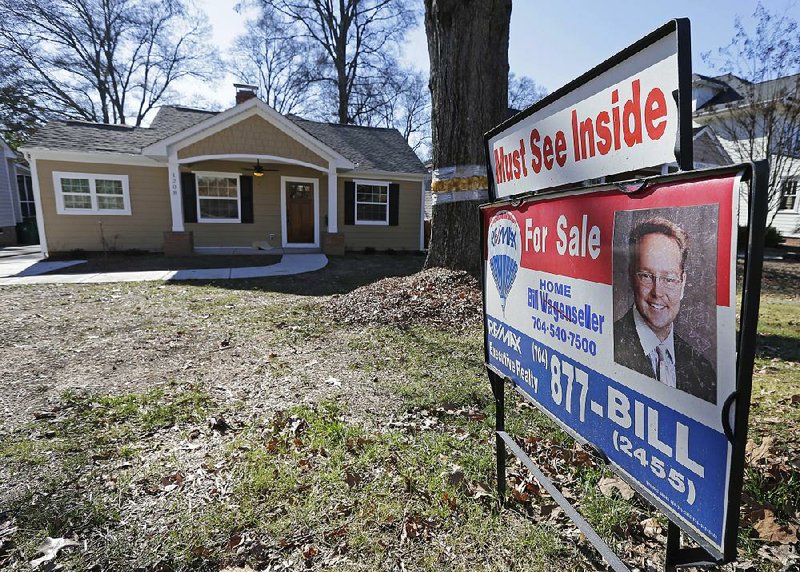Home prices in 20 U.S. cities appreciated at a faster pace in the year ended in January, indicating the residential real-estate market continues to improve.
The S&P/Case-Shiller index of property values increased 4.6 percent from January 2014, the biggest gain since September, after rising 4.4 percent the previous month, a report from the group showed Tuesday in New York. That matched the median projection of 28 economists surveyed by Bloomberg. On a national scale, prices rose 4.5 percent from January 2014.
A dearth of supply will continue to drive up home prices this spring as demand is spurred by rising rents. Builders such as KB Home expect to post strong revenue in the warmer months ahead, based on early signs of strength, particularly among first-time buyers.
"The housing market's in much better shape, getting better all the time," said Scott Brown, chief economist at Raymond James & Associates Inc. in St. Petersburg, Fla. "It still has a long way to go to get back to what we would consider a steady state."
Economist estimates in the Bloomberg survey ranged from gains of 4 percent to 5 percent. The S&P/Case-Shiller index is based on a three-month average, which means the January figure also was influenced by transactions in November and December.
Seasonally adjusted home prices in the 20-city index increased 0.9 percent in January from the previous month, matching December's advance. Unadjusted prices were little changed.
Fourteen cities in the index showed year-over-year gains in January that were larger than in the previous month, with Chicago experiencing the largest acceleration. San Francisco was among the six cities with smaller increases.
The year-over-year gauge, based on records dating back to 2001, provides a better indication of trends in prices than the monthly figures, the group has said.
"The combination of low interest rates and strong consumer confidence based on solid job growth, cheap oil and low inflation continue to support further increases in home prices," David Blitzer, chairman of the S&P index committee, said in a statement.
"Despite price gains, the housing market faces some difficulties," Blitzer said. "Home prices are rising roughly twice as fast as wages, putting pressure on potential home buyers and heightening the risk that any uptick in interest rates could be a major setback."
There is evidence the industry is already rebounding as the likelihood of a near-term interest rate rise by the Federal Reserve increases.
More Americans than forecast signed contracts to purchase previously owned homes in February, braving the winter weather to take advantage of cheap borrowing costs. The index of pending sales increased 3.1 percent to 106.9, the highest since June 2013, after a 1.2 percent gain the previous month that was smaller than initially estimated, according to figures released Monday by the National Association of Realtors.
In the same month, new-home sales unexpectedly surged to a seven-year high, the Commerce Department said March 24. Sales increased 11.6 percent to a 481,000 annualized pace, the most since June 2008, which exceeded all estimates in a Bloomberg survey.
Homebuilders have been expecting demand to increase as the U.S. adds jobs, mortgage rates remain near record lows, and pent-up demand is unleashed after years of underproduction.
"The early signs of spring selling season have been very encouraging," Jeffrey Mezger, the Los Angeles-based chief executive officer of KB Home, said during a March 20 earnings call. "Our increasing traffic is a strong indication that demand is on the rise."
KB Home's orders for the three months through February increased 24 percent in volume and 25 percent in value from the year-earlier period. First-time homebuyers accounted for 50 percent of sales, Mezger said. That represents "an incredible pent-up demand that seems to be starting to get unlocked."
Business on 04/01/2015

